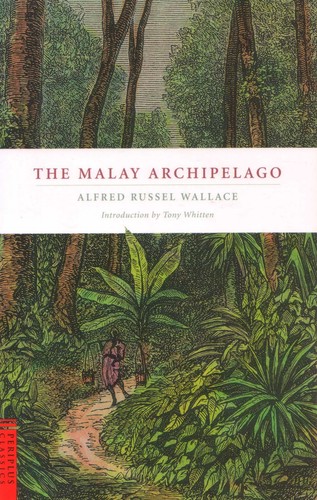 The Dyaks all declare that the Mias [Orangutan] is never attacked by any animal in the forest, with two rare exceptions; and the accounts I received of them are so curious that I give them nearly in the words of my informants, old Dyak chiefs, who had lived all their lives in the places where the animal is most abundant. The first of whom I enquired said, “No animal is strong enough to hurt the Mias; and the only creature he ever fights with is the crocodile. When there is no fruit in the jungle, he goes to seek food on the banks of the river, where there are plenty of young shoots that he likes, and fruits that grow close to the water. Then the crocodile sometimes tries to seize him, but the Mias gets upon him and beats him with his hands and feet, and tears him and kills him.” He added that he had once seen such a fight, and that he believes that the Mias is always the victor.
The Dyaks all declare that the Mias [Orangutan] is never attacked by any animal in the forest, with two rare exceptions; and the accounts I received of them are so curious that I give them nearly in the words of my informants, old Dyak chiefs, who had lived all their lives in the places where the animal is most abundant. The first of whom I enquired said, “No animal is strong enough to hurt the Mias; and the only creature he ever fights with is the crocodile. When there is no fruit in the jungle, he goes to seek food on the banks of the river, where there are plenty of young shoots that he likes, and fruits that grow close to the water. Then the crocodile sometimes tries to seize him, but the Mias gets upon him and beats him with his hands and feet, and tears him and kills him.” He added that he had once seen such a fight, and that he believes that the Mias is always the victor.
My next informant was the Orang Kayas, or chief of the Balow Dyaks on the Semunjon River. He said, “the Mias has no enemies; no animals dare attack it but the crocodile and the python. He always kills the crocodile by main strength, standing upon it, pulling open its jaws and ripping up its throat. If a python attacks a Mias, he seizes it with his hands, and then bites it, and soon kills it. The Mias is very strong; there is no animal in the jungle so strong as he.”
It is very remarkable that an animal so large, so peculiar, and of such a high type of form as the Orangutan, should be confined to so limited a district — to two islands, and those almost the last inhabited by the higher Mammalia; for, east of Borneo and Java, the Quadrumania, Ruminants, Carnivora, and many other groups of Mammalla diminish rapidly, and soon entirely disappear. When we consider, further, that almost all other animals have in earlier ages been represented by allied yet distinct forms — that, in the latter part of the tertiary period, Europe was inhabited by bears, deer, wolves, and cats; Australia by kangaroos and other marsupials; South America by gigantic sloths and ant-eaters; all different from any now existing, though intimately allied to them — we have every reason to believe that the Orangutan, the Chimpanzee, and the Gorilla have also had their forerunners. With what interest must every naturalist look forward to the time when the caves and tertiary deposits of the tropics may be thoroughly examined, and the past history and earliest appearance of the great man-like apes be made known at length.







